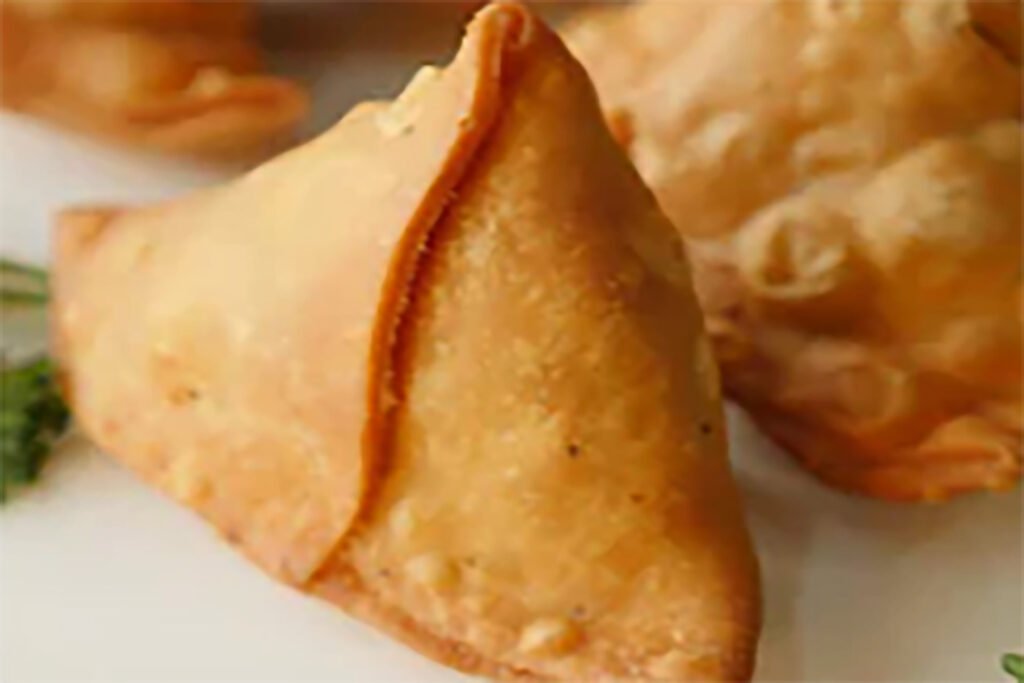Samosas, those delicious, crispy triangles of joy, hold a special place in the hearts and taste buds of many. Originating from the Indian subcontinent, samosas have gained popularity worldwide as a beloved street food and appetizer. Let’s take a deeper dive into the world of samosas, exploring their rich history, diverse variations, and even learning a recipe to make them at home.
History and Cultural Significance of Samosa:
The origins of samosas can be traced back to the Middle East, where a similar dish called “sambusak” was popular. It is believed that Arab traders introduced these stuffed pastries to the Indian subcontinent, where they quickly became a culinary sensation. Over time, samosas evolved and took on unique regional variations, incorporating local spices, fillings, and cooking techniques.
In different cultures, samosas have their own distinct significance. In India, they are a popular street food, often served with spicy chutneys and enjoyed as a tea-time snack. In Pakistan, samosas are commonly served during festive occasions and celebrations. They have also found their way into the cuisines of countries like Bangladesh, Nepal, Sri Lanka, and even parts of Africa and the Caribbean.
Variations and Fillings:
Samosas come in a variety of shapes, sizes, and fillings, allowing for endless creativity in the kitchen. The most common type is the vegetable samosa, which typically features a spiced potato and pea filling. However, meat lovers can indulge in meat-filled samosas, such as chicken, beef, or lamb variations, where the filling is often cooked with aromatic spices like cumin, coriander, and garam masala.
For those with a more adventurous palate, there are countless regional variations to explore. The Punjabi samosa is known for its larger size and robust filling, while the Kolkata samosa often includes a sweet and tangy chutney called tamarind chutney. In South India, you’ll find samosas with a thin, crispy crust, and a spicy vegetable filling, while the Mughlai samosas are known for their rich, meaty fillings.
Recipe: Vegetable Samosas
Now, let’s dive into a simple yet delicious recipe for vegetable samosas that you can try at home:
Ingrediants:
For the dough:
- 2 cups all-purpose flour
- 4 tablespoons ghee or vegetable oil
- 1/2 teaspoon salt
- Water, as needed
For the filling:
- 2 medium-sized potatoes, boiled and mashed
- 1/2 cup green peas, boiled
- 1 small onion, finely chopped
- 1 green chili, finely chopped (optional)
- 1 teaspoon ginger-garlic paste
- 1 teaspoon cumin seeds
- 1 teaspoon coriander powder
- 1/2 teaspoon turmeric powder
- 1/2 teaspoon garam masala
- Salt, to taste
- Vegetable oil, for frying
Instructions:
In a large mixing bowl, combine the flour, ghee or oil, and salt. Mix well until the mixture resembles breadcrumbs. Gradually add water and knead to form a firm dough. Cover the dough with a damp cloth and let it rest for 15-20 minutes.
In a pan, heat some oil and add the cumin seeds. Once they start to sizzle, add the chopped onions and green chili. Sauté until the onions turn golden brown.
Add the ginger-garlic paste and cook for another minute. Then, add the mashed potatoes, boiled peas, coriander powder, turmeric powder, garam masala, and salt. Mix well and cook for a few minutes until the flavors meld together. Remove from heat and let the filling cool.
Divide the dough into small lemon-sized balls. Roll each ball into a thin circle or oval shape.
Cut the rolled dough in half. Take one half, wet the straight edge with water, and fold it to form a cone shape, overlapping the wet edges and pressing them together to seal.
Fill the cone-shaped dough with the prepared vegetable filling, leaving some space at the top. Wet the edges of the open side and pinch to seal the samosa.
Repeat the process with the remaining dough and filling.
Heat oil in a deep pan or skillet for frying. Once the oil is hot, reduce the heat to medium and carefully slide in the samosas. Fry until they turn golden brown and crispy on all sides. Remove with a slotted spoon and drain on a paper towel.
Serve the samosas hot with your favorite chutneys or sauces.
Samosas are best enjoyed fresh and hot, with the crispy exterior giving way to the flavorful filling. Whether you savor them as a snack, appetizer, or a part of a meal, samosas never fail to tantalize the taste buds and leave you craving for more. So, go ahead, try out this recipe, and embark on a culinary adventure through the world of samosas.







